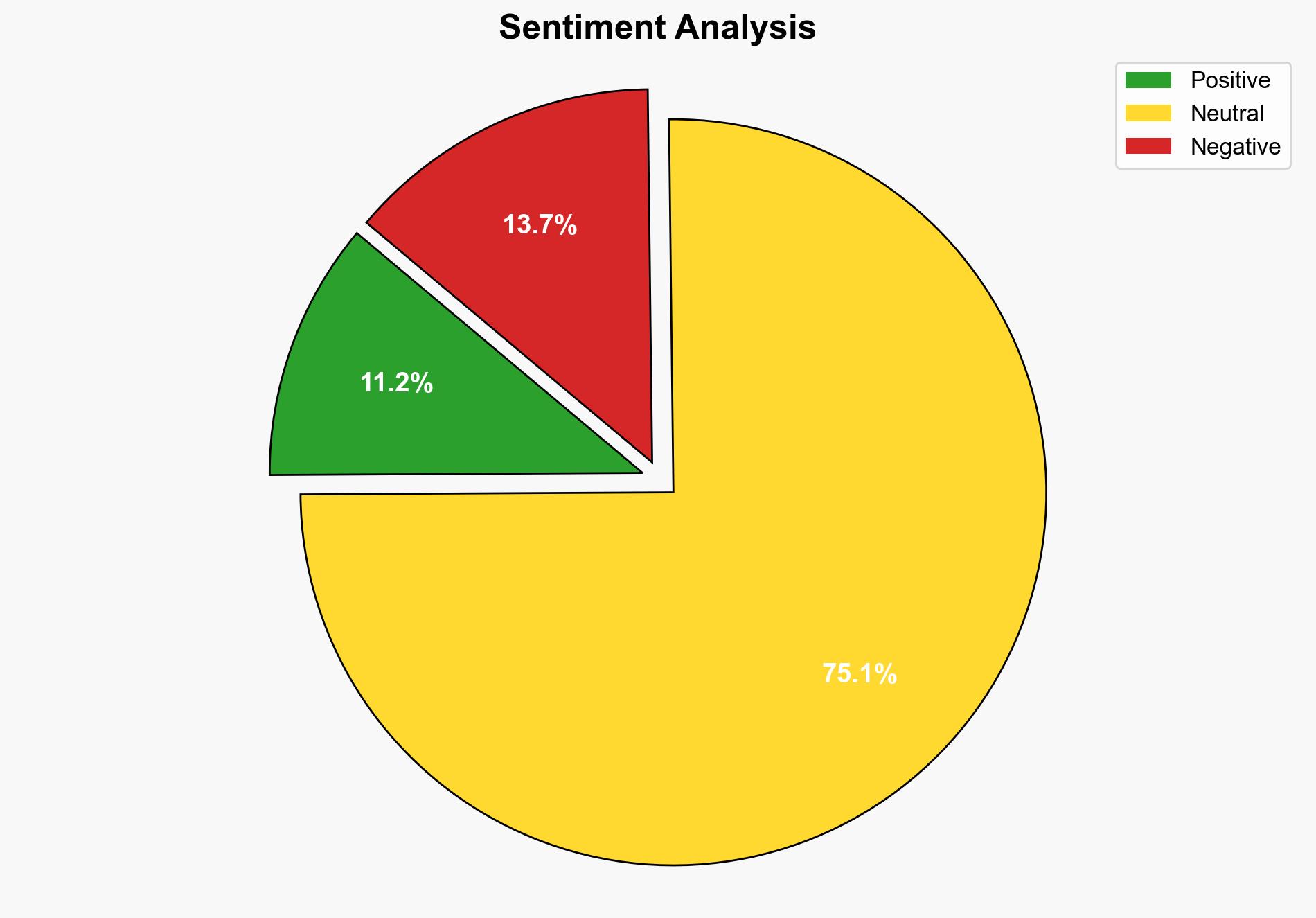The AI job cuts are here – or are they – BBC News
Published on: 2025-10-29
Intelligence Report: The AI job cuts are here – or are they – BBC News
1. BLUF (Bottom Line Up Front)
The most supported hypothesis is that recent job cuts attributed to AI are primarily driven by macroeconomic factors rather than direct AI displacement. Confidence level: Moderate. It is recommended to monitor AI adoption trends and economic indicators to better understand future workforce impacts.
2. Competing Hypotheses
Hypothesis 1: The job cuts are primarily due to AI technology adoption, leading to workforce displacement.
Hypothesis 2: The job cuts are primarily driven by macroeconomic factors, such as post-pandemic hiring corrections and interest rate changes, with AI being a secondary factor.
Using ACH 2.0, Hypothesis 2 is better supported. Evidence such as Amazon’s hiring patterns during the pandemic and subsequent corrections, along with expert opinions suggesting typical economic cycles, align more with macroeconomic influences than direct AI impacts.
3. Key Assumptions and Red Flags
Assumptions:
– Hypothesis 1 assumes rapid AI adoption across sectors without considering economic cycles.
– Hypothesis 2 assumes that economic factors outweigh technological advancements in current job cuts.
Red Flags:
– Over-reliance on anecdotal evidence from specific companies may skew perception.
– Lack of comprehensive data on AI’s direct impact on specific job roles.
4. Implications and Strategic Risks
If AI is indeed a major factor, there could be a long-term shift in job markets, requiring workforce reskilling. Conversely, if macroeconomic factors are dominant, job markets may stabilize with economic recovery. There is a risk of overreaction to AI’s perceived threat, potentially leading to policy missteps.
5. Recommendations and Outlook
- Monitor AI technology adoption rates and its impact on various sectors.
- Encourage workforce development programs to address potential AI-driven displacement.
- Scenario Projections:
- Best Case: AI adoption leads to new job creation and economic growth.
- Worst Case: Rapid AI adoption causes significant unemployment and economic disruption.
- Most Likely: A balanced outcome where AI and economic factors stabilize job markets over time.
6. Key Individuals and Entities
– Martha Gimbel, Budget Lab, Yale University
– Morgan Frank, University of Pittsburgh
– Enrico Moretti, University of California, Berkeley
– Lawrence Schmidt, MIT Sloan School of Management
7. Thematic Tags
economic trends, AI impact, workforce development, technology adoption




